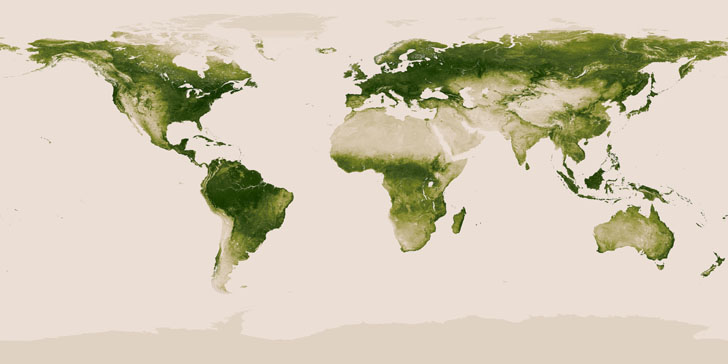The image generated using the data from NASA/NOAA Suomi NPP satellite reveals differences in greenness among various contnents. The satellite data are collected based on difference between how much energy is absorbed by the land versus how much is reflected back into the space.
Plants absorb visible light for photosynthesis. When the vegetation is lush, nearly all visible light is absorbed by green leaves and near-infrared light is reflected back into space. So for deserts and snow covered regions where the vegetation is low will reflect more visible light and infrared light.
The Visible and Infrared Imaging and Radiometer Suite (VIIRS) sensor on-board the satellite is capable of recording these different types of visible and near-infrared light. VIIRS sensor collects 330 megabytes of data every minute.
Vegetation image generated every week is about 13 gigabytes and 80,000 x 40,000 pixels. Take the below video tour of vegetation on our planet.
These data are collected during cloud free days over various regions of the planet and organized together to form a single cloud free image of the planet. These images are helpful in understanding environmental issues and impacts of urbanization on our forests.
For high resolution image, visit – http://www.nnvl.noaa.gov/green.php
Credits: NASA and NOAA
